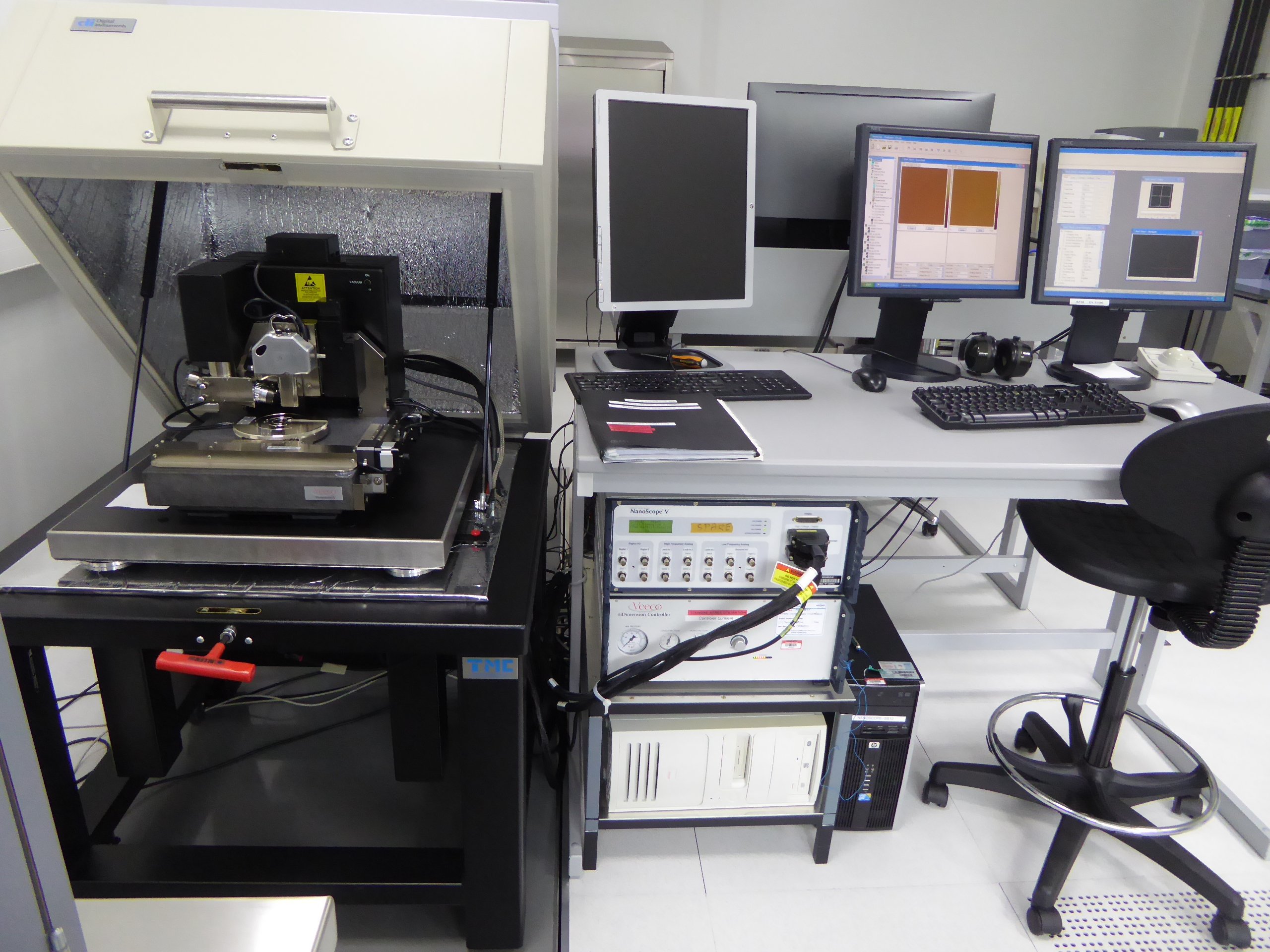
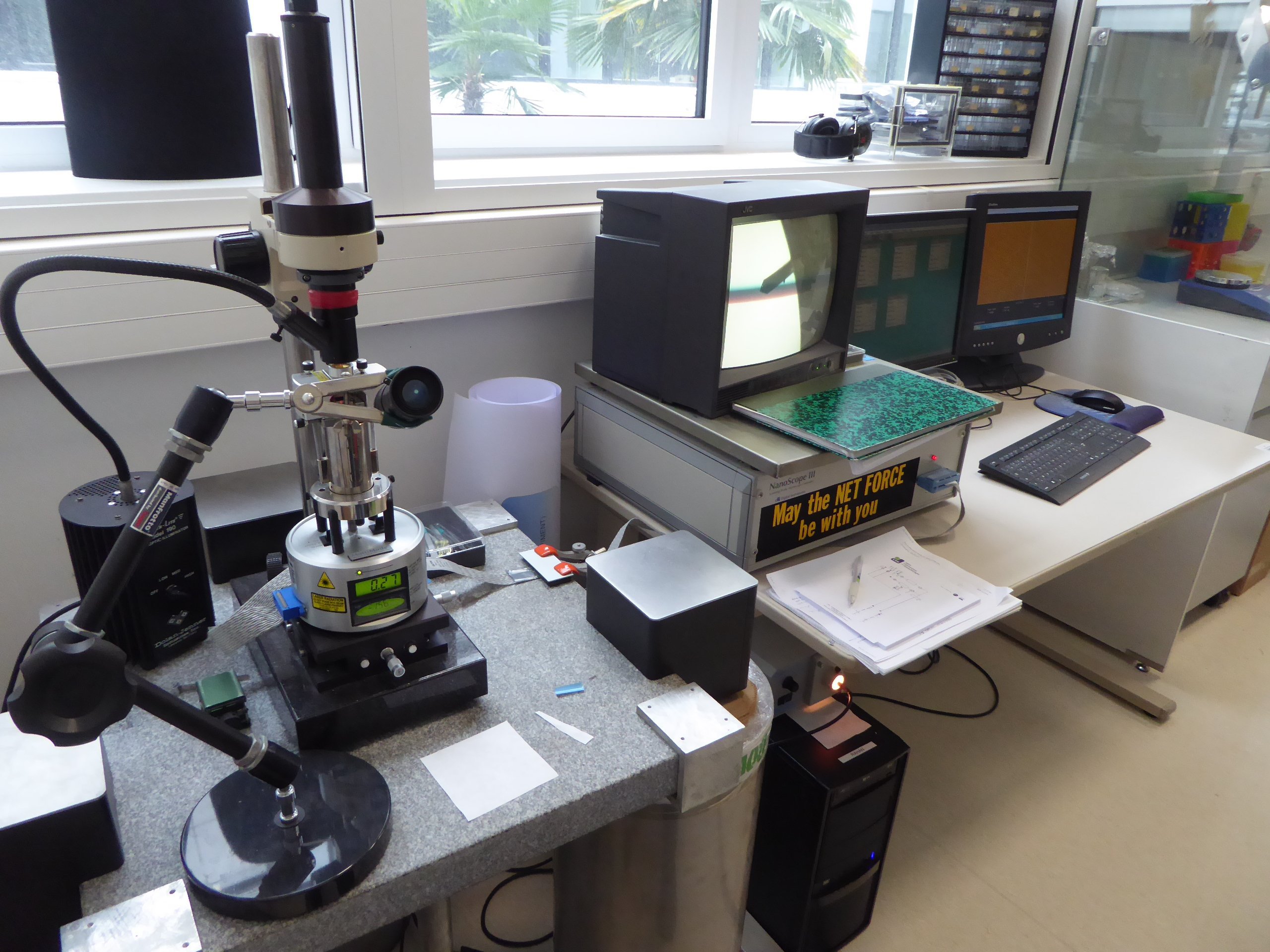
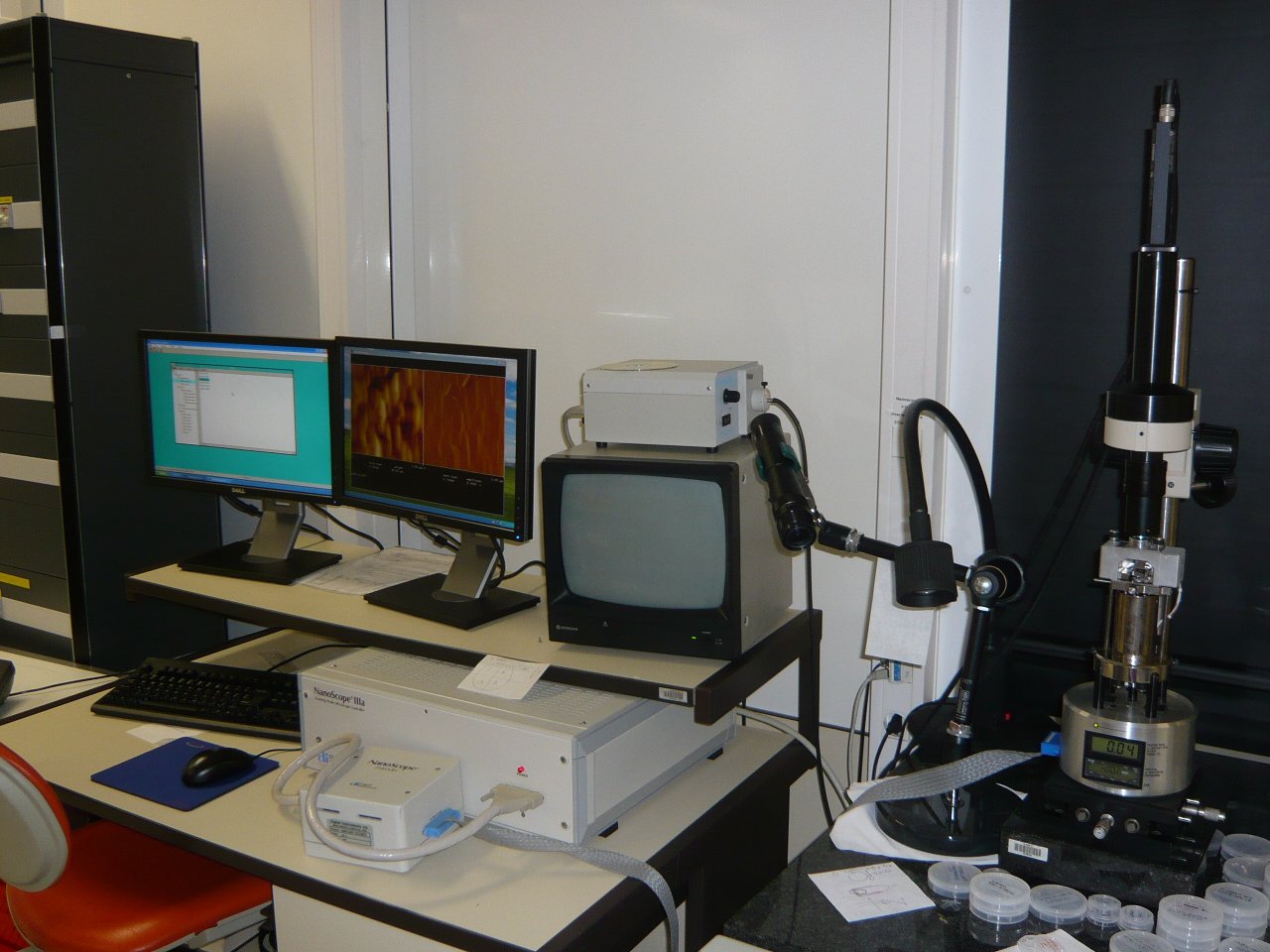
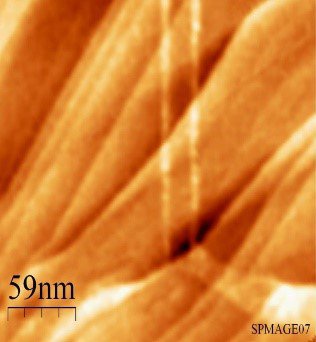
GaAlAs/GaAs Nanofils :
Core-shell structure of GaAs/GaAlAs nanofils in epitaxial layer by MBE, analysis by AFM in transverse section. We mesure AlGaAs shell thickness.
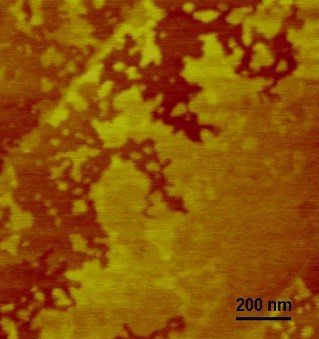
Epitaxial Graphene Layer :
SiC substrat sublimation build some layers. The goal is to control the growth of large (1 µm) Graphene terrace.
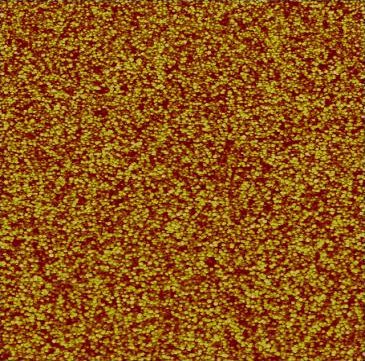
Metal deposit control :
Surface morphology, roughness and thickness of a metallic thin layer by AFM. Rq = 2 nm (picture of 3x3 µm). Process optimisation of metallic deposit of supraconductor NbN very thin (10 nm) film by spraying.
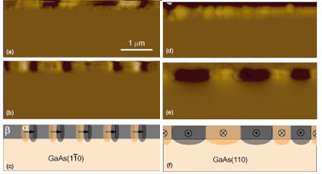
Magnetic domains structure of MnAs/GaAs(001) :
MnAs electrodes on GaAs(001) behaves as classic magnetic rungs with a hiigh uniaxial anisotropy in the plane. This promote an open configuration of magnetic domains which was observed by MFM measurement in transversial section of MnAs/GaAs(001) split layer.
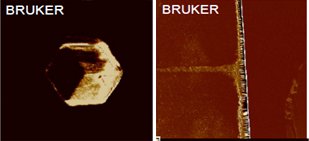
III/V layer on Si :
I/V AFM measurements of GaAs nanocrystals on Si substrat and buried nanofils (G. Hallais, Dpt Matériaux).
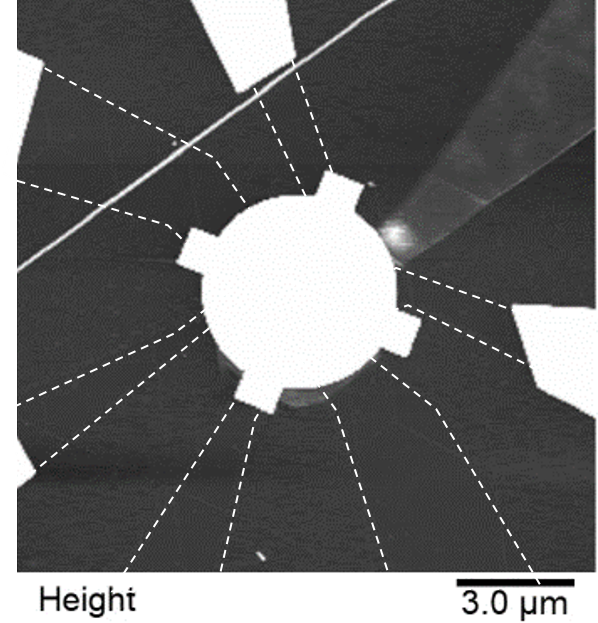
Nanomanipulation of 2D materials:
Twist angle control in van der Waals heterostructures (R. Ribeiro-Palau, Nanoelectronic Dpt).